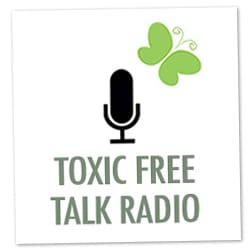
Primal Label-Reading 101 Part 2: Sneakiest Sneaks
Examples:
The Beef-Stuffed Zucchini in my Paleo Cookbook for Dummies wouldn't be the same without the coconut aminos or the chipotle chili powder, to be sure! And my OMG Chocolate Chip Cookies couldn't be as fantastic as they are without the almond flour and Paleo-approved chocolate chips found in the … you guessed it … middle aisles. But do venture into these aisles with your eyes wide open. Just as there are many surprises in life, sneaky surprises await on many foods with a barcode.
Examples:
Did you know that canned tuna fish often contains poor-quality oils? Or that jarred salsas can contain corn, sugar and wheat? Mustard is a great way to add flavor, but as innocent as this condiment is, you still have to look for sneaky add-in ingredients! Be particularly wary of the sneakiest sneaks of all, which create absolute nutritional toxicity in your system and should definitely be on the “no” list. These include: Wheat and gluten, soy, added sugars, artificial sugars and corn. Beware!
Gluten
All major cereal grains should most likely be avoided because of their toxic effects (more on this on a future post). They do find their ways into your diet if you are not careful. Review the following list and you’ll be in-the-know when it comes wheat- and gluten-filled foods that you should avoid:
Sneaky names for wheat and gluten:
If the following ingredients appear on a label, it most likely contains wheat and/or gluten:- artificial flavoring
- bleached flour
- wheat protein
- caramel color
- dextrin
- flavorings
- wheat starch
- hydrolyzed plant protein (HPP)
- hydrolyzed vegetable protein (HVP)
- hydrolyzed wheat protein
- hydrolyzed wheat starch
- malt
- maltodextrin
- modified food starch
- natural flavoring
- seasonings
- vegetable protein
- vegetable starch
- wheat germ oil
- wheat grass
Soy
Soy, like grains and whole grains, is another toxin promoted as healthy. And soy is now nearly synonymous with the modern diet — it’s present in just about every packaged and processed food in the form of soy protein isolate, soy flour, soy lecithin and soybean oil! For this reason, most people are unaware of how much soy they consume. The average American gets up to 9 percent of total calories from soybean oil alone. So watch out for this one, it’s everywhere!
Sneaky names for soy:
If the following ingredients appear on a label, it may contain soy:- artificial flavoring
- hydrolyzed plant protein
- hydrolyzed soy protein
- hydrolyzed vegetable protein (HVP)
- miso
- natural flavoring
- soy sauce
- soy flour
- soy fiber
- soy albumin
- soy lecithin
- soy protein
- stabilizer
- tamari
- tempeh
- textured soy flour (TSF)
- textured soy protein (TSP)
- textured vegetable protein (TVP)
- tofu
- vegetable broth
- vegetable gum
- vegetable starch
Sugar
Sugar is ubiquitous in the modern-day diet. Most have adapted their tastes to expect sugar in almost every bite. Sugar once in a while is okay, but the constant drip of the sugar faucet is problematic to our cells.
Sneaky names for sugar:
If the following ingredients appear on a label, it contains added sugars:- agave nectar
- barley malt syrup
- cane crystals
- corn sweetener
- corn syrup
- crystalline fructose
- dehydrated cane juice
- dextrin
- dextrose
- disaccharide
- evaporated cane juice
- fructose
- fruit juice concentrate
- galactose
- glucose
- high-fructose corn syrup
- invert sugar
- lactose
- maltodextrin
- malt syrup
- maltose
- monosaccharide
- polysaccharide
- ribose
- rice syrup
- saccharose
- sorghum or sorghum syrup
- sucrose
- treacle
- turbinado sugar
- xylose
Watch for it, in its many forms and disguises!
Sugar in the form of fruit juice concentrate often appears in high-quality sausages, and some nut butters include dehydrated cane juice. These are minimal amounts of sugar, so after your 30-Day Reset, it’s up to you how much of these “acceptable” sugars you allow in your everyday diet.
Artificial sweeteners: worse than sugar?
Artificial sweeteners not only add zero calories to food, they add zero nutrition and may actually cause damage. When you taste something sweet, your body expects to have calories associated with that flavor —and that sets off a whole slew of reactions in your body to deal with those calories. The chemical manipulation of artificial sweeteners is harmful and can lead to insulin resistance. Avoid these artificial sweeteners on their own and in processed foods:- Aspartame
- Equal
- NutraSweet
- Saccharin
- Splenda
- Stevia
- Sucralose
- SweetLeaf
- Sweet ‘n Low
- Truvia
Corn
Corn plays a major role in America’s agricultural demise. Watch the movies King Corn or Food Inc. for more on this point. The foundational point, though, is that corn is low in nutrition and high in starch and phytic acid (anti-nutrient that causes malnutrition and gut distress). Government subsidy is a big problem – corn is in EVERYTHING! Watch out for this one like a hawk!
Sneaky names for corn:
If the following ingredients appear on a label, it contains corn derivatives:- artificial flavoring
- corn alcohol
- corn flour
- corn meal
- corn oil
- corn starch
- corn sweetener
- corn syrup solids
- dextrin
- dextrose
- food starch
- high fructose corn syrup
- maltodextrin
- mazena
- modified gum starch
- sorbitol
- MSG
- natural flavorings
- vegetable gum
- vegetable protein
- vegetable starch
- xanthan gum







